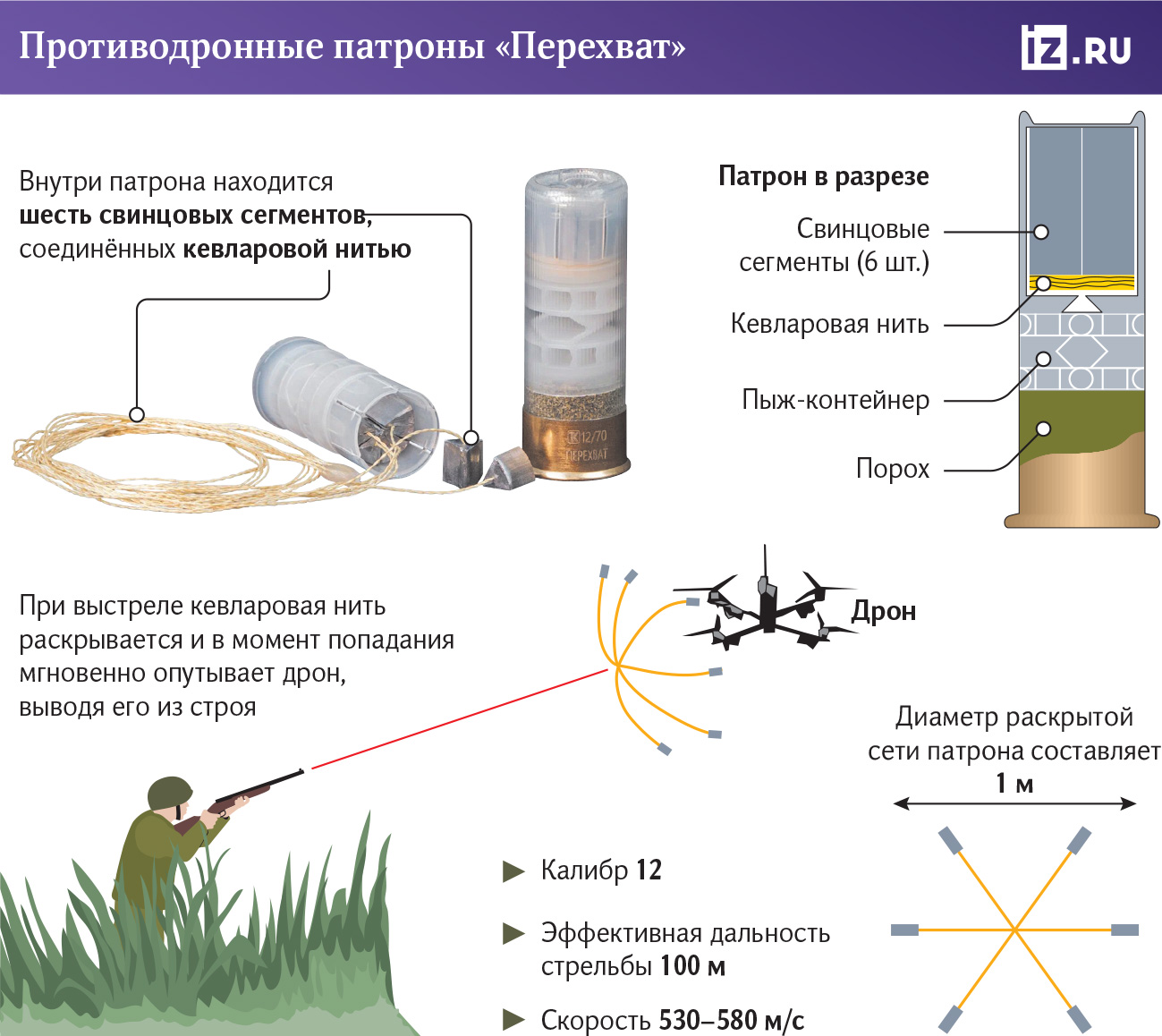In an effort to enhance its defense against small unmanned aerial vehicles (UAVs), Russia has developed specialized anti-drone cartridges. The initial batches of these cartridges have already been sent to forces involved in the ongoing conflict in Ukraine. These anti-drone cartridges were developed by Closed Joint Stock Company Tekhkrim to counter the growing threat posed by drones in warfare.
Oleg Kuzmenko, director of CJSC Tekhkrim, informed Izvestia that the first batches, named 12/70 "Intercept" and 12/76 KS, have been deployed to Russian forces engaged in what Moscow refers to as a "Special Military Operation" in Ukraine. These cartridges are currently undergoing extensive testing in the conflict zone and are designed for use with 12-gauge smoothbore guns, such as the "Saiga-12," "Vepr-12," and MP-155, among other single-barrel and double-barrel models.
Kuzmenko explained that the Intercept cartridge features six lead segments connected by Kevlar thread. When fired, the structure opens up 15 to 20 meters from the muzzle, creating a destruction field with a diameter of up to one meter. This design is based on knitted buckshot traditionally used in hunting but adapted to ensure a continuous destruction field, minimizing gaps that could allow drones to escape unharmed.
The 12/76 KS cartridge, another innovative design, builds on the "Fat Goose" hunting cartridge, incorporating the renowned Eley ring for improved accuracy and an extended range of up to 75 meters. Loaded with a No 3 shot, which is highly effective against drones, the 12/76 KS achieves a balance between shot size and weight, maximizing impact while maintaining accuracy. However, Kuzmenko noted that the effectiveness of these cartridges at longer ranges depends on factors such as the shooter's skill and experience.
Ongoing testing aims to further refine the cartridge design. "We tested it on FPV drones," Kuzmenko said. "The results were good. Now we are waiting for practical application results to determine its effectiveness and identify any necessary improvements."
Russia has been developing various anti-drone technologies as drones have become cost-effective assets on the battlefield, capable of performing diverse tasks. One such innovation is the modified Joker-10 FPV drone, equipped to intercept enemy UAVs by releasing decoy thermal targets filled with explosives and projectiles. This modified drone can also ram enemy drones as a last resort.
Additionally, Russia is mass-producing the "Gran" electronic intelligence complex, which monitors drone frequencies and relays information to electronic warfare units, representing just a fraction of the new equipment being tested to combat enemy drones.
The introduction of new cartridges offers significant advantages on the battlefield. Russian experts believe these cartridges will effectively engage small drones with minimal training required for frontline fighters. Colonel Alexander Perendzhiev of the Plekhanov Russian University of Economics praised the development, highlighting its cost-effectiveness and immediate applicability, which enhances fighter survival rates. He also noted that these cartridges could be useful for civilians in border areas where lightweight drones might target populations and infrastructure.
In rural areas, where many people own guns and know how to use them, such ammunition could help establish local defenses. The actual battlefield effectiveness of these new cartridges remains to be seen, but this development underscores Russia's ongoing efforts to innovate and devise new strategies to neutralize the drone threat.

No comments:
Post a Comment